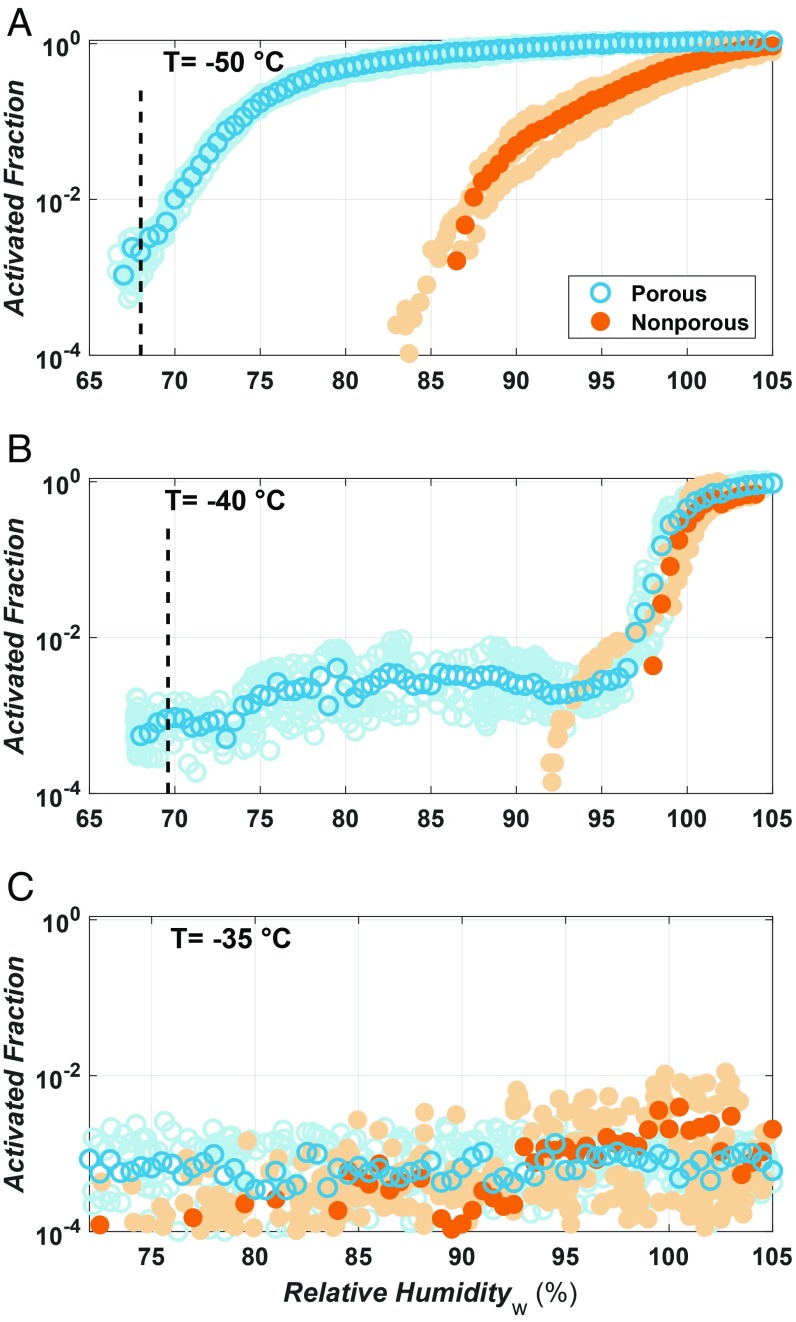Fig. 2.
Activated fraction of 400-nm porous (3.8-nm pore diameter; blue open circles) and nonporous (orange filled circles) silica particles at −50 °C (A), −40 °C (B), and −35 °C (C) as a function of RHw above ice saturation. The darker shaded symbols represent the mean of three experiments (lightly shaded symbols) averaged into 1% RHw bins. The dashed vertical line indicates the RHw required for a 3.8-nm pore to fill as predicted using the inverse Kelvin effect with a silica–water contact angle of 62°(SI Appendix). No vertical line appears at −35 °C (C) as the pores are expected to be full below ice saturation (71% RHw). The points at low activated fractions which remain relatively constant are due to particles larger than 1 μm making it into the chamber (Methods).

